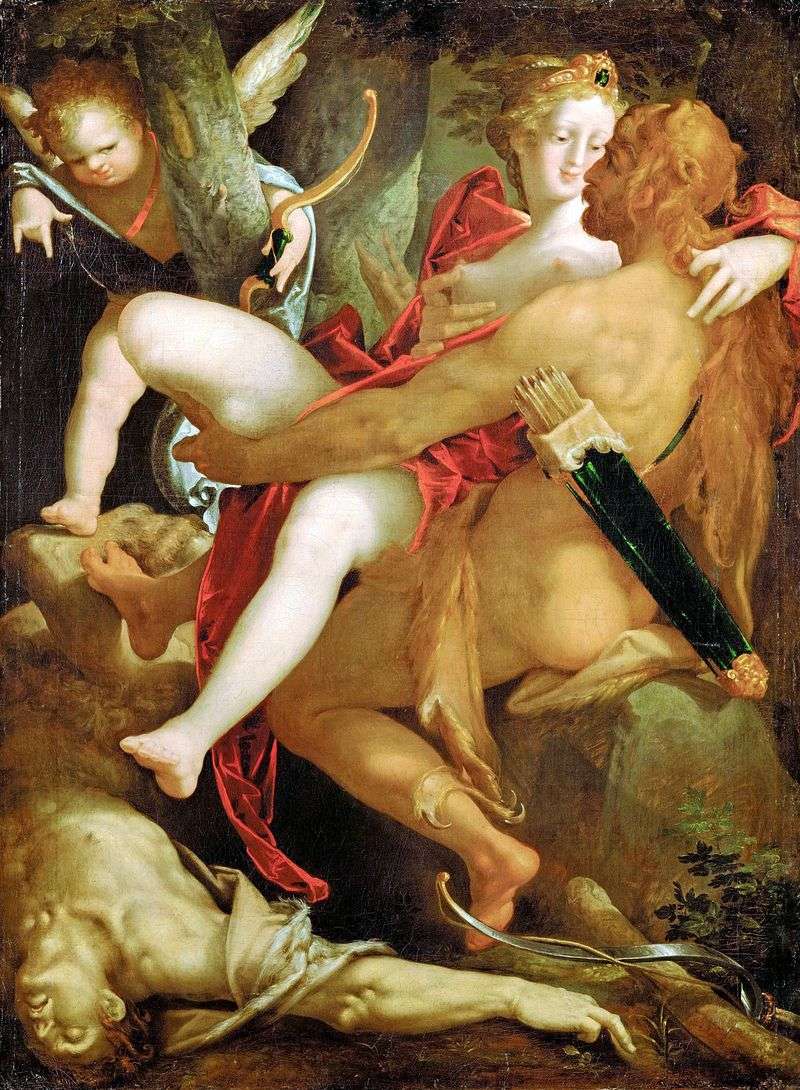
A painting by the Flemish painter Bartholomeus Spranger “Hercules, Dejanira and the dead centaur Ness.” The size of the picture is 112 x 82 cm, copper. The painting is based on ancient Greek mythological stories about the national Greek hero Hercules. According to the mythological representations of the Greeks, Hercules was the son of Zeus and Alcmene, the wife of the tyrinth king Amphitryon, the grandson of Perseus.
After accomplishing all his exploits, Hercules received the hand of Deyanira, the daughter of the Aetolian king Oinea, because of whom he had previously fought with the water god Aheloy and cut off one of his horns turned from him into a cornucopia. Dejanira, in order to tie Hercules closer to her, sent him a donation, impregnated with poison, which she considered ignorantly as a love potion. As soon as the clothes warmed on the body, the poison began to exert its effect and Hercules, tormented by terrible pain, ordered to take himself to Trakhin, where Dejanira desperately laid her hands on herself.
Hercules from the last forces built a fire for himself on this and told him to light him passing by Peant who was given his bow for this service. On the funeral pyre, amid the thunder and the flashing of purple lightnings, the transfigured Hercules ascended in the cloud to heaven, where, having reconciled with the goddess Hera and becoming the husband of the goddess of the eternal youth of Geba, he continued to live in the assembly of the Olympic gods.


